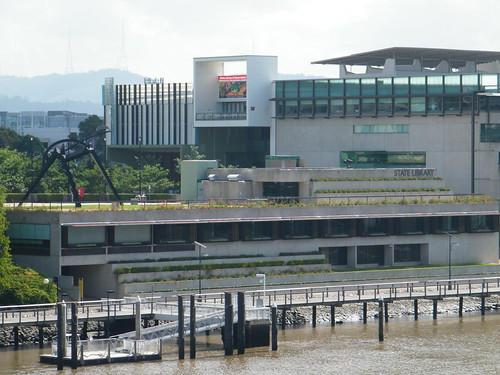
1893 floods in Brisbane – Queen St. in the CBD. Source: Wikimedia
We have all been shocked by the devastating floods in southern Queensland and our hearts reach out to those living through this destruction. This is not just a crisis in one city, three quarters of the state has been affected by floods over the last three weeks.
At last count over eighty six towns and cities in Queensland have been either flooded or isolated due to floods. There has been constant reference to the floods of 1974.
Advertisement
The image above indicates that these floods are not an aberration - they have been occurring ever since European settlement and there is evidence of flooding prior to this.
We live in a country that is very dry, often drought-stricken and prone to fierce bush fires and paradoxically suffers periodically with floods.
Like two years ago when Victoria had devastating bush fires at the same time as north Queensland was suffering from severe flooding, this time southern Queensland has suffered from a huge torrent of water while firefighters in Perth, Western Australia were battling a large bushfire.
Historical Records
The floods in Queensland, as well as the floods in
New South Wales,
Victoria ,
Brazil and
Sri Lanka, will have consumed countless photos, diaries, letters etc. At the moment the priority is where it should be – saving lives and creating safe living conditions. There will be little time or resources to save personal memories.
Natural disasters such as these floods are terribly damaging to our historical records. All the homes that have been flooded will now have waterlogged photo albums, diaries and hard disc drives. While the State Library of Queensland has given good advice on how to save some of these precious memories, in many cases owners will not be able to restore them.
Even the State Library of Queensland has been affected. The photos of the library taken before and during the floods show how badly flooded their building was.
Advertisement

State Library of Queensland before April 2010. Source: Zayzayem on flickr

After: State Library of Queensland 12 Jan 2011. Source: @jonoH on twitpic
Fortunately the
State Library staff moved collections from the lower levels to the fourth floor before the flood hit. The biggest problem will be the humidity which will affect the items due to the lack of air conditioning because of power failures. The best way to ensure that historical records do not get destroyed in flood or fire is to store them in the cloud. Backups that are stored on site or close by are just not as safe. Libraries around the world are working hard to digitise their collections. Recently the State Library of Queensland uploaded
50,000 images to Wikimedia. Due to their foresight and effort I was still able to access their collection on Wikimedia while their building was closed and their website down due to the floods.
Brisbane
I read about Brisbane's flooding problem while doing a geography major at university.
Through an article by Rahman and Weber we learned that Brisbane is prone to flooding because of flash flooding of creeks within the city due to severe thunderstorms, overland flooding due to built structures impeding and redirecting the natural path of rainwater overland and flooding of the Brisbane river (Rahman and Weber, p. 74). Brisbane is hilly and therefore has many valleys where floodwater accumulates. Unfortunately buildings have been sited in areas where floods can occur. The
Bureau of Meteorology has summarised the history of flooding in Brisbane by graph and a chronology. This shows 1841 was the year when Brisbane suffered its highest flood levels.
1893 saw flooding that almost reached the levels of 1841. The 1974 floods were severe but considerably lower than the floods of the nineteenth century. While the 1974 floods were higher
6,700 homes were affected whereas
in 2011 14,700 homes were affected.

Source: Bureau of Meteorology
The recognition of the susceptibility of Brisbane to flooding in the nineteenth century can be seen in this flood map produced in 1893.

Flood map of Brisbane, 1893. Source: 'Themed Mapping', Queensland government website.
Nearly a year ago I stayed in the riverside suburb of Yeronga while doing my research at the John Oxley Library for my thesis. It was a beautiful suburb that stretched along the river. I spent a pleasant but hot morning walking along the banks of the river on the way to the University of Queensland. At the time I was grateful for how flat this stretch was. Unfortunately the close proximity to the river and the flat ground which I appreciated nearly a year ago are features that no Brisbane resident will appreciate today.
The suburb of Yeronga is just one of many that has been invaded by the river. 417 houses in this suburb have been immersed in floodwaters. The inescapable issue that the authorities will have to grapple with in the aftermath of this tragedy is how to plan for the future. These floods will occur again and again. New buildings and structures will need to be constructed to replace those that have been destroyed. Where will they be placed?
Print Sources
- Rahman, K., and T. Weber, 'Sustainable urban development in Brisbane City - the Holy Grail?, Water Science and Technology, 47 no. 7-8, pp. 73-9.
Maps